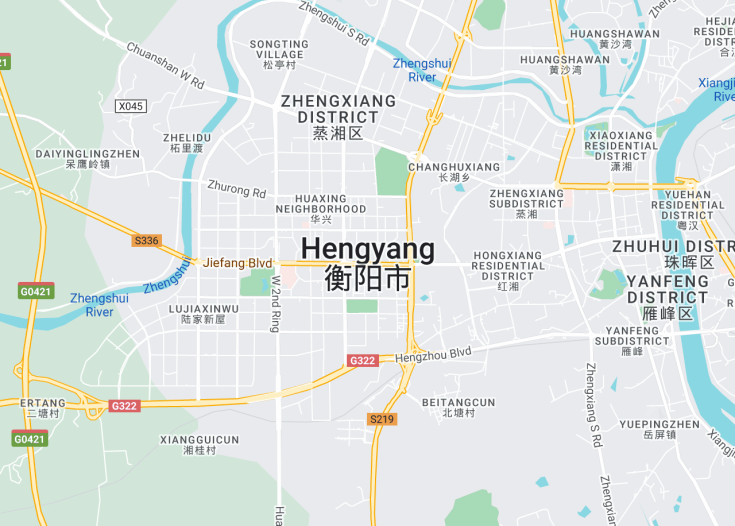Hengyang, often referred to as the “Bright Pearl in Southern China,” stands as the second largest city in Hunan Province. Rich in historical heritage, Hengyang boasts significant sites such as Mount Heng, one of China’s five sacred mountains, offering spiritual solace and breathtaking vistas. The city is steeped in antiquity with attractions like the ancient Yueping Temple and Zhurong Peak. Hengyang’s vibrant culture, traditional cuisines, and the warm hospitality of its residents make it a compelling destination for travelers seeking both tranquility and adventure in the heart of China.
When visiting Hengyang, ensure to explore the Nanyue Temple, a splendid site that combines spiritual significance with architectural beauty.
Plan your visit during spring or autumn to enjoy Hengyang’s natural scenery and cultural festivals in comfortable weather.
Top things to do & see in Hengyang
Select the following sights and activities to discover best tickets and tours available in Hengyang.
Hengyang: The Southern Gate of Hunan
| Country | China |
| Time in Hengyang | GMT+8 |
| Language spoken | Mandarin |
| Population | 7,188,429 (Census 2020) |
| Currency | Chinese Yuan (CNY ¥) |
| Airports |
|
Located in the heart of southern China’s Hunan Province, Hengyang holds historical significance as a strategic and cultural hub. Known as “the Bright Pearl in Southern China,” Hengyang is a thriving urban center just south of the scenic Xiang River. This city holds a poignant place in Chinese history due to its role in various historical events, especially notable during the ancient Three Kingdoms period and subsequent dynasties.
Hengyang’s economy has witnessed rapid growth, primarily due to its status as a transportation nexus. The city benefits from its position where multiple major rail lines converge, facilitating a bustling trade in goods and resources. Hengyang’s manufacturing sector is also notable, with industries ranging from machinery and electronics to biotechnology. Beyond its economic activities, the city is home to significant cultural sites like the Hengshan Mountain, one of China’s Five Great Mountains, renowned for its breathtaking views and religious significance as a Taoist sanctuary.
With its rich culture and history, modern Hengyang is not only a popular destination for tourists but also a vibrant community where traditional customs and modern lifestyle blend seamlessly. The annual Hunan Cuisine Festival attracts food enthusiasts eager to experience the spicy and savory flavors typical to the region.
Where is Hengyang?
Hengyang is strategically located in the Hunan Province of China, serving as a critical intersection point for several major railway lines.
Distances:
| Route | Distance by car | Time by car |
|---|---|---|
| Changsha to Hengyang | 160 km | 2 hours, 20 minutes |
| Guangzhou to Hengyang | 590 km | 6 hours |
What is Hengyang famous for?
Hengyang is famed for its stunning Hengshan Mountain, which is one of the Five Great Mountains of China, celebrated for its picturesque landscapes and cultural heritage as a site of Taoist worship.
History
Prehistoric Times to Han Dynasty (Before 202 BC)
The region that encompasses modern-day Hengyang has a rich history stretching back to prehistoric times. Archaeological findings suggest the presence of ancient human settlements, which over time evolved into a culturally rich area during the Chinese Bronze Age. As the region entered the historical record during the Zhou Dynasty, it became an increasingly important cultural and military site.
Sui to Qing Dynasty (581 AD – 1912 AD)
During the Sui and Tang dynasties, Hengyang gained prominence due to its strategic location on the routes connecting central China to the south. The city saw further development during the Song and Yuan dynasties and became a thriving center for commerce and industry by the Ming and Qing dynasties, known for its craftsmanship in various traditional Chinese arts.
Modern Era (1912 – Present)
In the 20th century, Hengyang was strategically significant during major conflicts such as the Second Sino-Japanese War, where it suffered heavy damage. Post-war, Hengyang rapidly industrialized, benefiting from China’s economic reforms. Today, it serves as a hub for technological and industrial development while preserving its rich historical heritage, manifested in its architecture and cultural sites.
Visit Hengyang
What to see and do in Hengyang
Discovering Hengyang offers a blend of historical intrigue and natural beauty. Visitors can explore the ancient walls of the Hengyang City, which tell tales of the city’s past fortifications. The Huiyan Peak is another must-see, providing panoramic views of the city and a spot for peaceful contemplation. For those interested in religious and cultural history, the Shigu Academy offers insights into the scholarly pursuits during the Song Dynasty.
- Walk through the storied Hengyang City Walls
- View from Huiyan Peak
- Visit the Shigu Academy
Events in Hengyang
Hengyang buzzes with cultural festivities throughout the year. One of the highlights includes the Lantern Festival, celebrated in the first lunar month, where streets come alive with colorful lanterns and lively performances. During the Autumn months, the Hengyang Food Festival showcases the region’s culinary delights, attracting food enthusiasts from across the nation.
Best time to visit Hengyang
The optimal time to visit Hengyang is during spring (April to June) and autumn (September to November). These months offer pleasant weather, conducive to exploring the outdoors and participating in local festivals.
Is Hengyang worth visiting?
Hengyang presents a compelling mix of historical depth and modern vibrancy, making it a worthwhile destination for those who appreciate both. However, it may not cater extensively to those looking for high-adrenaline activities or a bustling nightlife. The city offers a quieter, more reflective type of tourism, ideal for cultural enthusiasts and history buffs. Travelers should also prepare for language barriers and less Westernized amenities, which might challenge those without experience in similar travel settings.










